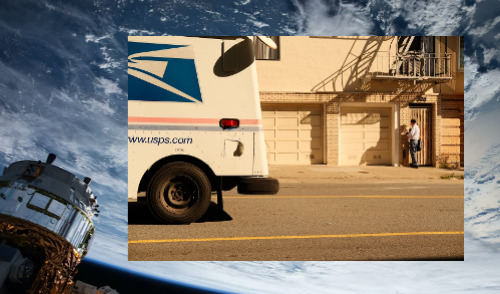An IRS agent killed during training exercise, USPS reports another quarter loss of over $1 Billion, and a nuclear-powered rocket.
In this weekly roundup of recent news from around the federal government’s workforce, we look at a training exercise that turned lethal in Arizona. Also – the USPS is reporting losses of over $1 billion for each quarter of the fiscal year 2023 while NASA is working with DARPA on a building the prototype for a nuclear-powered rocket.
Are you a federal employee? Learn about retirement planning, how to manage your benefits, and more! Check out our no-cost webinars-
IRS Agent Killed
During what has been called a routine exercise, an act of friendly fire left an IRS agent dead on Thursday, August 18th. Several agents from multiple federal agencies were partaking in the exercise at a shooting range in Phoenix, AZ, owned by the Federal Bureau of Prisons. The deceased was identified as 47 year-old Patrick Bauer, who served more than 20 years with the National Guard. The FBI is currently investigating the tragic incident.
USPS Reports Another Loss
The US Postal Service reported a quarterly loss of $1.7 billion despite posting $18.6 billion in revenue. At the same time last year, the USPS reported a net income of $59.7 billion. Since the third quarter of the previous fiscal year, first-class mail revenue increased 4%, but marketing mail fell 8.8% and operating expenses are up 9.6%. Work hours were also cut by 6 million in that timeframe, but despite that, this quarter’s loss has been the third straight quarter with over $1 billion lost. There was a $2.5 billion reported loss the previous quarter and an even $1 billion for the first quarter of fiscal year 2023. Underfunded retirement benefits, specifically FERS and CSRS, were cited as an important contributor to the net loss.
Nuclear Rockets
Along with Lockheed Martin and BWX Technologies from Lynchburg, VA, NASA and DARPA announced they are working on a nuclear powered rocket, set to be tested in 2026. Known as project DRACO (Demonstration Rocker for Agile Cislunar Operations), the technology could dramatically decrease travel times from Earth to the Moon, and eventually to Mars. With current technology, the red planet could only be reached by humans when it is closest to Earth, a position attained but once every 26 months. Project DRACO will orbit around the Earth, where the fission reaction would occur, and won’t fall back to the planet for 300 years. If successful, the liquid fuel would go from the current grade of 20-kelvin to an astonishingly fast 2700-kelvin.
----
Until Next Time,

The information has been obtained from sources considered reliable but we do not guarantee that the foregoing material is accurate or complete. Any opinions are those of Serving Those Who Serve writers and not necessarily those of RJFS or Raymond James. Any information is not a complete summary or statement of all available data necessary for making an investment decision and does not constitute a recommendation. Investing involves risk and you may incur a profit or loss regardless of strategy suggested. Every investor’s situation is unique and you should consider your investment goals, risk tolerance, and time horizon before making any investment or financial decision. Prior to making an investment decision, please consult with your financial advisor about your individual situation. While we are familiar with the tax provisions of the issues presented herein, as Financial Advisors of RJFS, we are not qualified to render advice on tax or legal matters. You should discuss tax or legal matters with the appropriate professional. **




